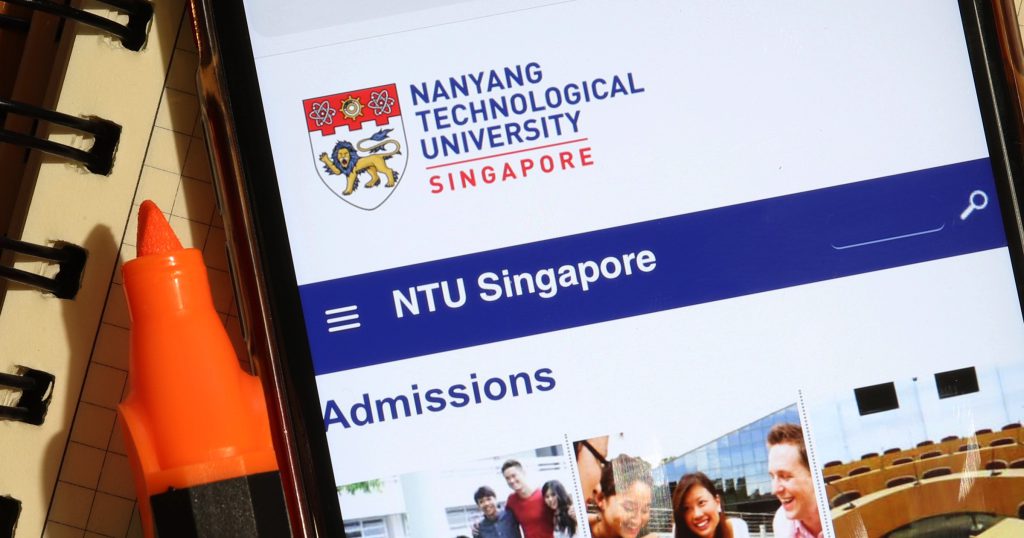Using QR codes to make payments have become extremely commonplace in Singapore. QR payments are accepted at most establishments, from restaurants to hawker centres to malls and standalone stores.
To encourage non-cash payments amongst businesses, the government has focused on QR based payments as a viable alternative for cash.
In 2018, the Monetary Authority of Singapore (MAS), in collaboration with Infocomm Media Development Authority (IMDA), launched a unified QR code called Singapore Quick Response Code (SGQR). It combines multiple payment QR codes, thereby eliminating the need for merchants to invest in separate QR code from each provider.
SGQR is now widely accepted across the country at more than 160,000 merchant points.
However, before the launch of the SGQR, the e-wallet industry was still nascent, and usage of QR codes for making payment was scant. That did not stop Fave co-founder and CEO Joel Neoh from launching the fintech firm in 2016.
Though the firm now has multiple features from an e-wallet to a buy now, pay later solution, it started off with e-vouchers.
From Groupon to Fave

Joel has his roots in Groupon Malaysia, where he served as CEO in 2010. He later on stepped up to head Groupon’s Asia-Pacific operations. For the unfamiliar, Groupon is a website and mobile app that offers coupons, cashback on purchases and group deals to consumers.
In 2016, Groupon Malaysia was acquired by fitness startup KFit, which had launched a separate deals app — Fave. In an interview with Tech In Asia, Joel said that the Groupon acquisitions would be absorbed into Fave.
The Fave Group then went on to acquire Groupon Singapore in 2017, and the fintech startup is now based here.
“Fave was built on a future that we imagined — At that time, we thought that the future would be cashless, and thus we launched QR payments,” said Joel.
Joel told Vulcan Post that while he was running Groupon, he learnt a lot about e-vouchers, and so, Fave started off with digital vouchers. However, at that point of time, digital wallets were not a popularised yet, and there were hardly any e-wallets in the region.
“Even asking merchants to put up a QR code was very odd, and the first few months were a big education process. Merchants would ask how they could get their money back, and there were a lot of questions about security,” explained Joel.
Furthermore, the uptake was not as good as expected as merchants were hesitant to provide discounts and vouchers all the time.
In the years of 2017 and 2018, Singapore started to see greater adoption rates of QR payments as big banks like DBS started launching digital wallets. That was also when Fave launched its merchant cashback.
“We tried different models, but we didn’t expect the merchant cashback feature to grow so quickly. Now, its in over 20,000 restaurants and retailers in Singapore.” shared Joel.
Besides consumers being a fan of cashback, Fave’s merchant cashback feature was also solving a big problem for merchants, by acting as a loyalty programme.
Since consumers can only claim their cashback at the same brand they received it from, Fave’s merchants were starting to see more customers return. As people started to go cashless, many did not want to carry loyalty cards anymore.
By having cash back options that can only be used at the selected merchants, Fave was essentially providing merchants with a replacement to their loyalty programmes.
Five years on, Fave is now present in four countries — Malaysia, Singapore, Indonesia and India. It has over 6.1 million users on the app, and more than 40,000 merchants.
Venturing into the buy now, pay later space

This June, Fave announced the launch of its “Buy Now, Pay Later” (BNPL) service in Singapore and Malaysia.
Called FavePay Later, the service offers interest-free flexible payments on the Fave app.
Eligible Fave users will be able to split purchases over three equal, interest-free instalments. Repayments will be automatically drawn every month, with no fees charged for on-time payments.
In addition, customers can earn up to 10 per cent cashback with every purchase.
FavePay Later is available at all Fave merchants in Singapore, including brands like Pandora, Marks & Spencer, Best Denki, Puma, GNC and more.
Fave said that it will extend its BNPL offering to some of the largest online commerce companies in Southeast Asia within the later half of 2021.

According to Joel, FavePay Later is one of the firm’s fastest growing products. Prior to launching the service, the Fave team spent some time observing the BNPL space, and noticed that consumers are looking for new ways to pay.
In fact, about two in five Singapore residents (or 1.1 million Singaporeans) have used some type of BNPL solution as of October last year, a consumer survey by Finder showed.
Sometimes people feel there are hidden fees and extra charges with credit and debit cards. What has been driving BNPL growth is its transparency, and the fact that there are no additional charges like late fees.
When we saw the model we thought it was interesting — it is also important that we find new ways for our merchants to connect with customers too. When you think of credit today, its a relationship between you and the bank. With BNPL, you can get credit from the merchant.
Joel Neoh, co-founder and CEO, Fave
With BNPL, there are no frills for consumers, and merchants are on board as they want to make it more convenient for their customers to purchase.
However, there has been many criticisms directed towards BNPL solutions, with some claiming that it is a “debt trap” for consumers.
“This is a cause for worry especially among those millennials who lack financial discipline to curb unnecessary and excessive spending,” said Vasu Menon, executive director of investment strategy, OCBC Bank.
Despite that, Joel told Vulcan Post that customers in Singapore have been credit worthy so far, and even with credit cards, default rates are low.
Furthermore, on Fave’s website, it states that customers’ eligibility for FavePay Later are assessed based on several criteria including validity of credit or debit card linked to the user’s Fave account and the user’s transaction history on the e-commerce platform. Customers would incur a late payment charge of 1.5 per cent of the final price if they failed to fulfill an installment before the due date.
Expanding beyond SEA

In May, Fave announced its acquisition by Pine Labs, an Indian merchant commerce platform, for RM185 million (S$59.08 million).
With the acquisition, Pine Labs is hoping that Indian consumers will be able to use the Fave app to save across 500,000 merchant network points powered by the fintech unicorn across 3,700 cities in India.
Pine Labs is a cloud-based platform that provides a wide range of payment acceptances with merchant commerce solutions like inventory management and customer relationship management.
They cater to merchants of all sizes and its stored value platform includes issuing, processing, and distributing digital gift cards for corporate customers. Their key investors include Mastercard, PayPal, and Temasek.
Pine Labs is one of the largest payments company in India, especially offline. India is a huge market with a 1.3 billion population, and having an opportunity to expand into such a big market is rare. QR payments is a big thing in India, and Pine Labs wants us to continue operations in Southeast Asia, while also launching India, which struck a chord for us.
Joel Neoh, co-founder and CEO, Fave
As of now, there will be no changes made to Fave’s leadership structure with the acquisition, but the founders will have their roles expanded to lead the overall consumer platform across Asia and hire over 100 new employees in Southeast Asia and India.
In the upcoming months, Fave will focus on its expansion in India, as well as consider expanding to more Southeast Asian countries. Over the past few years since founding, Fave has helped consumers to save over US$400 million, which prompted the team to consider helping customers with broader financial services.
However, these plans are not concrete or set in stone yet.
“I didn’t expect Fave to grow so fast, fast forward to today, over seven million people have downloaded Fave, and we process over 20 million transactions a year. This means that there are multiple transactions going on each second,” said Joel.
“The credit goes to the Fave team — more than half of our leadership group has been with us since day one, and we want to continue to accelerate the offline world’s transition to the digital economy.”
Featured Image Credit: Fave / Honeycombers











